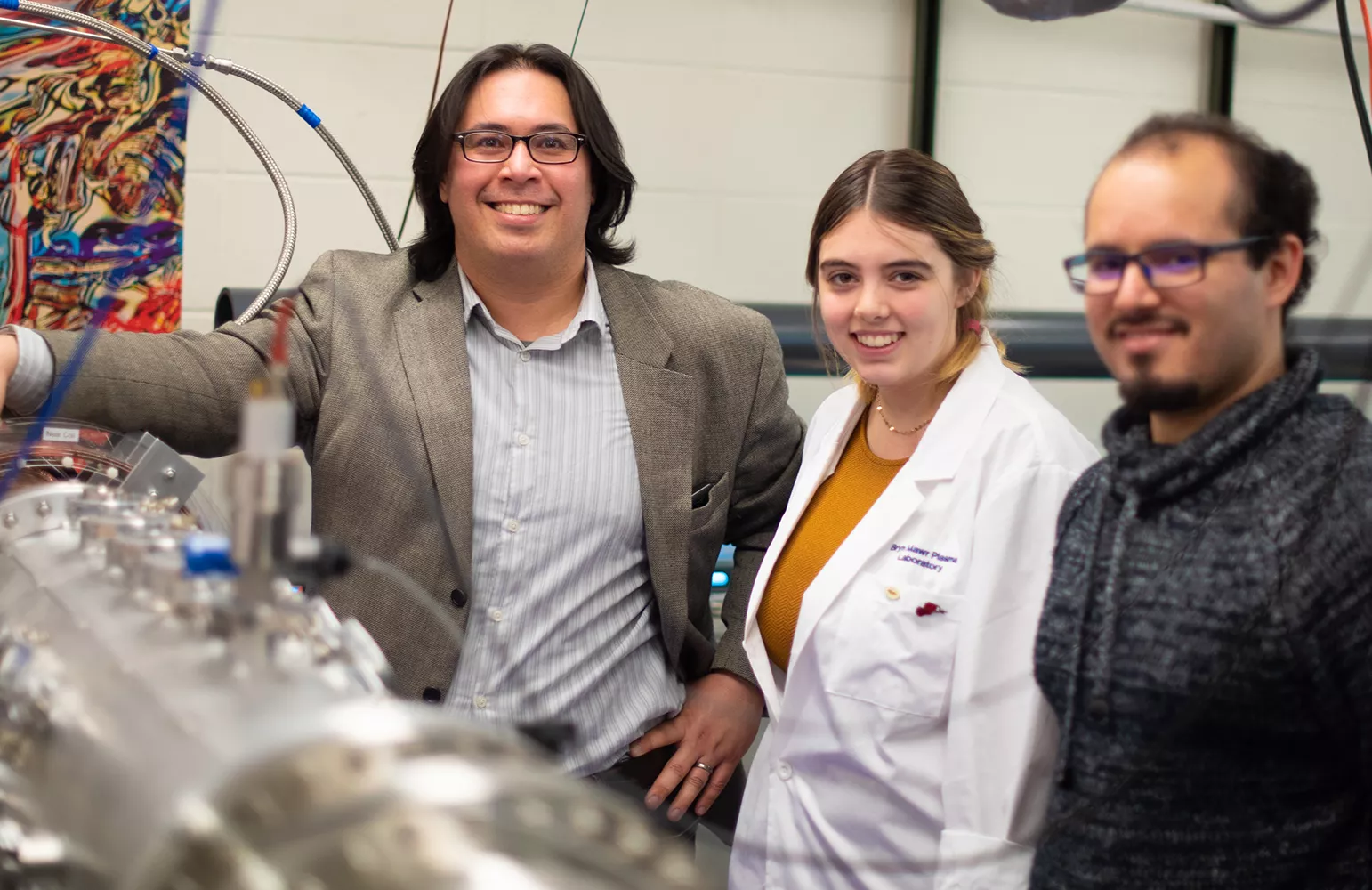
Assistant Professor of Physics David Schaffner has been awarded a highly prestigious NSF CAREER award by the National Science Foundation to establish the Bryn Mawr Plasma Laboratory (BMPL) as a liberal-arts centered facility for basic plasma research and plasma science education.
The nearly $500,000 in funding over five years has the dual goal of expanding small scale experimental research into the physics of a turbulent plasma, a gas of electrically charged particles, and serving as a gateway for increasing the number of women plasma physicists entering the field.
Schaffner began working on the lab when he joined Bryn Mawr’s faculty three years ago and has been running experiments since November.
“In some ways it’s the first true magnetic plasma wind tunnel,” explains Schaffner, as he begins the process of collecting a fresh data set using a chamber he’s built for what he calls The Bryn Mawr Magnetohydrodynamic Experiment (BMX). “Something we see in fluid dynamics is that anything that we call a fluid, when it’s turbulent, it’s turbulent in a very standard, similar way. It doesn’t matter if it’s air in an airplane, the ocean, or coffee in your coffee cup, the way we observe turbulence is the same. The question is, ‘Does that extend to plasma?’”
Answering that question has a host of ramifications linked to everything from protecting satellites and the Earth’s electrical grids from damaging solar winds to using plasma to develop nuclear fusion reactors.
“Instead of air, or water, or something, I’m using a magnetized hydrogen plasma. We create turbulent plasma on one end, and that plasma gets launched down the chamber, just like in a conventional wind tunnel," says Schaffner as he runs an experiment through the one-of-a-kind tunnel. "In a conventional wind tunnel you’ve got a fan in front and it blows air down the chamber and you can have probes or you can put obstacles in there, and see what the interactions look like. A similar interaction between turbulent plasma and obstacles can be explored in the new experiment."
Schaffner and his student team of researchers were already able to present some preliminary data at the annual APS-Division of Plasma Physics meeting.
In the near future, Schaffner is particularly excited to be able to start to compare his laboratory findings with data sent back from the Parker Solar Probe, a spacecraft recently launched to explore the atmosphere of the sun and to determine the origins of the solar wind. PSP is now the closest man-made object to our sun, reaching nine times closer to the sun than the planet Mercury.
“As you get closer to the sun, the type of plasma that you see is going to become more and more like the plasma that we’re able to create in the laboratory. Some of the things that we’re learning in this laboratory might actually help the NASA scientists interpret their data.”
In addition to working with Bryn Mawr’s students and doing research in his lab, Schaffner will also use the funding to setup the Small College Plasma Consortium and to develop a series of training modules. The consortium will be a collective of smaller schools and undergraduate physics departments focused on plasma research, and will allow these schools to pull together resources and expertise.
"With the support from the NSF CAREER award, I plan to establish the BMPL as a hub for plasma physics research as well as a program that advocates for increasing diversity in the plasma physics community."